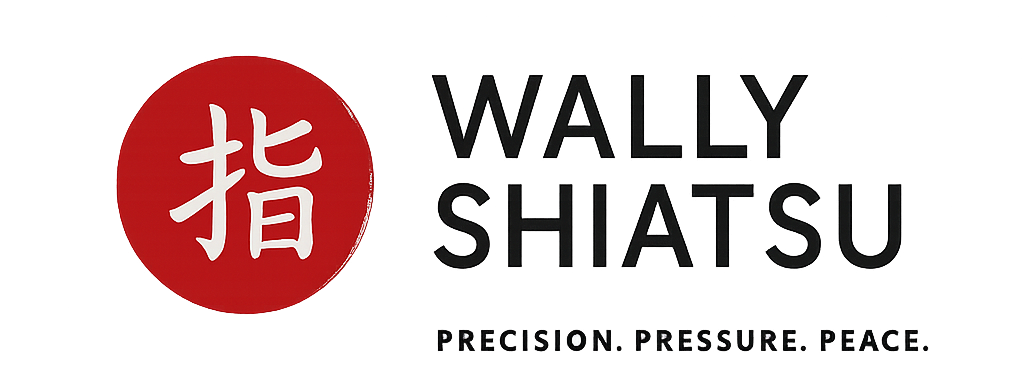Essential Equipment for Home Massage Therapy Setup
Must-Have Tools for a Successful Practice
A home massage therapy practice requires specific tools to provide effective and enjoyable sessions for clients. These tools include:
- Massage Table: A sturdy table is crucial. It should be adjustable for height and comfortable for clients.
- Massage Oils or Lotions: Quality products enhance the experience. They help the hands glide smoothly over the skin.
- Bolsters and Cushions: These accessories support the body, making it easier for clients to relax.
- Towels and Sheets: Fresh linens maintain hygiene and comfort.
- Music System: Soft music creates a calming atmosphere.
Creating a Comfortable Environment for Clients
The environment plays a vital role in the success of a massage therapy practice. Here are some key elements to consider:
- Lighting: Soft, warm lighting can help clients feel more relaxed.
- Temperature: A comfortable room temperature is essential. Too hot or too cold can distract from the session.
- Aromatherapy: Scents like lavender or eucalyptus can enhance relaxation, contributing to the overall well-being.
Choosing the Right Massage Table and Accessories
Selecting the right massage table and accessories is fundamental. Here is a simple table to guide the choice:
| Feature | Importance | Recommendation |
|---|---|---|
| Table Width | Comfort for clients | 28-32 inches |
| Table Height | Adjustability for therapist | Adjustable height |
| Weight Capacity | Safety for all clients | At least 400 lbs |
| Material | Easy to clean and durable | Vinyl or leather |
| Folding Mechanism | Portability for home use | Lightweight and foldable |
By carefully selecting equipment and creating a soothing space, a massage therapist can significantly enhance the client experience.
Professional Qualifications for Massage Therapists
Importance of Certification and Training
Certification and training are vital for massage therapists. These qualifications show that a therapist has the right skills and knowledge to provide safe and effective treatments. Many clients look for certified professionals because it builds trust. A well-trained therapist understands human anatomy, various techniques, and how to address different client needs, which is essential for delivering effective treatments.
Understanding State Regulations for Practice
Every state has its own rules regarding massage therapy. It is crucial for therapists to be aware of these regulations. They often include specific educational requirements and guidelines for practice. By following state laws, therapists protect themselves and their clients.
Ensuring Compliance with Licensing Requirements
Licensing is a key aspect of practicing massage therapy. Most states require therapists to hold a valid license to operate legally. This often involves completing a certain number of training hours and passing an exam. Below is a table summarizing common licensing requirements across different states:
| State | Required Training Hours | Exam Required | License Renewal Period |
|---|---|---|---|
| California | 500 | Yes | Every 2 years |
| New York | 1000 | Yes | Every 4 years |
| Texas | 500 | Yes | Every 2 years |
| Florida | 500 | Yes | Every 2 years |
Staying compliant with these requirements is essential for a successful practice. It not only protects the therapist legally but also enhances the credibility of their services.
Effective Client Management for Massage Therapists
Organizing Client Information and Appointments
For a massage therapist, keeping client information organized is crucial. A well-structured system can save time and enhance the client experience. Therapists can use a simple spreadsheet or a specialized software program to track client details such as:
- Contact Information: Names, phone numbers, and emails.
- Health History: Notes on any medical conditions or past injuries.
- Appointment Records: Dates and times of past and future sessions.
By maintaining this information, therapists can tailor their services to meet individual needs effectively. It also helps in sending reminders for upcoming appointments, ensuring clients feel valued and cared for.
Building Strong Relationships with Clients
Building a strong rapport with clients is essential for a successful massage therapy practice. Trust and communication are the cornerstones of any lasting relationship. Here are some ways to foster these connections:
- Listen Actively: During sessions, therapists should take the time to understand clients’ concerns and preferences.
- Follow Up: After a session, a quick message to check on how clients are feeling can go a long way.
- Personal Touch: Remembering birthdays or special events can make clients feel appreciated.
These small gestures can lead to loyal clients who return for their therapy needs.
Utilizing Software for Scheduling and Billing
Using software for scheduling and billing can simplify many tasks for massage therapists. Here’s a quick overview of the benefits:
| Feature | Benefits |
|---|---|
| Scheduling | Easy appointment management and reminders |
| Billing | Streamlined payment processes |
| Client Records | Centralized information storage |
| Reporting | Insight into business performance |
With the right software, therapists can focus more on their clients and less on administrative tasks. This not only improves efficiency but also enhances the overall client experience.
Marketing Strategies for Home Massage Therapy Services
Utilizing Social Media to Attract Clients
In today’s digital age, social media serves as a powerful tool for attracting clients to home massage therapy services. By creating engaging content, therapists can showcase their skills and services. Posting before-and-after images, client testimonials, or even short videos can grab attention. Regularly updating platforms like Facebook, Instagram, and Twitter helps maintain visibility and connect with potential clients.
Key strategies include:
- Engaging Posts: Share tips on relaxation techniques or the benefits of massage, which can be found in resources like this guide.
- Client Interaction: Respond to comments and messages promptly.
- Promotions: Offer special discounts for first-time clients or referral bonuses.
Creating a Professional Website for Visibility
A professional website acts as a digital storefront. It should clearly outline the services offered, pricing, and contact information. Including an easy-to-navigate layout ensures potential clients can find what they need without hassle.
Essential elements of a website include:
| Element | Importance |
|---|---|
| Clear Service List | Helps clients understand what is available |
| Booking System | Simplifies the appointment process |
| Testimonials | Builds trust with potential clients |
Networking with Local Health Professionals
Building relationships with local health professionals is crucial. By connecting with doctors, chiropractors, and wellness centers, therapists can gain referrals. Attending health fairs or community events allows for face-to-face interactions, which can foster trust and credibility.
Effective networking strategies include:
- Collaborative Workshops: Partner with local health experts to host workshops.
- Referral Programs: Offer incentives for professionals who refer clients.
- Follow-Up: Always thank professionals for referrals to maintain a good relationship.
Tips for Conducting Client Consultations
Gathering Important Health Information
When a massage therapist meets a new client, the first step is to gather important health information. This helps in understanding the client’s needs and any potential health issues. A thorough consultation can be the difference between a great session and an ineffective one.
Key points to discuss include:
- Medical history: Identify any past injuries or conditions.
- Current medications: Some medications can affect how the body responds to massage.
- Pain areas: Clients should share where they feel discomfort.
- Lifestyle factors: Stress levels, exercise routines, and sleep patterns can influence the massage experience.
By collecting this information, the therapist can create a safe and effective environment for the client.
Setting Expectations for the Massage Experience
Setting clear expectations is crucial for a positive experience. Clients should know what to expect during their session. This can help reduce anxiety and enhance their comfort level.
Important aspects to cover:
- Massage techniques: Explain the types of techniques that will be used, such as Swedish or deep tissue, which can be explored further in this overview.
- Session duration: Clients should know how long the massage will last.
- Clothing options: Discuss what they should wear or if they will be draped with sheets.
- Communication: Encourage clients to speak up if they feel uncomfortable or need adjustments.
By laying out these details, the therapist builds trust and ensures the client feels at ease.
Developing Personalized Treatment Plans
Creating a personalized treatment plan is essential for effective therapy. After gathering health information and setting expectations, the therapist can tailor the session to meet the client’s specific needs.
Components of a personalized plan:
| Component | Description |
|---|---|
| Goals | Define what the client wants to achieve. |
| Techniques | Select techniques based on the client’s needs. |
| Frequency | Determine how often the client should return. |
| Follow-up | Plan for future sessions and adjustments. |
This approach not only addresses the client’s immediate concerns but also lays the groundwork for ongoing care.
Starting a Massage Business from Home
Understanding the Financial Aspects of Setup
Starting a home massage therapy practice requires a clear understanding of financial aspects. First, one must consider the initial costs. These can include massage tables, oils, and other supplies. Below is a breakdown of potential expenses:
| Expense | Estimated Cost |
|---|---|
| Massage Table | $200 – $600 |
| Oils and Lotions | $50 – $150 |
| Marketing Materials | $100 – $300 |
| Licensing and Insurance | $200 – $500 |
Additionally, it is crucial to set competitive pricing for services. Researching local competitors can provide insight into what clients are willing to pay. Keeping track of income and expenses will help in understanding profit margins.
Balancing Work and Personal Life in a Home Office
Working from home as a massage therapist can blur the lines between professional and personal life. To maintain a healthy balance, one must set clear boundaries. Here are a few tips:
- Designate a specific area for work: This helps to create a professional environment.
- Set work hours: Stick to a schedule to avoid overworking.
- Take breaks: Regular breaks can help recharge energy and maintain focus.
By creating a structured routine, one can enjoy the benefits of working from home while still having time for personal activities.
Strategies for Growing a Successful Massage Practice
To grow a successful massage practice, one must focus on client satisfaction and marketing. Here are some effective strategies:
- Offer promotions: First-time clients appreciate discounts, which can encourage them to return.
- Utilize social media: Platforms like Instagram and Facebook can help showcase services and attract new clients.
- Gather testimonials: Positive reviews from satisfied clients can build credibility and trust. For more insights, consider visiting our blog.
Incorporating these strategies can help in attracting more clients and ensuring the longevity of the practice.


